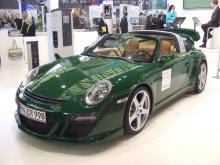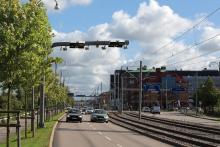Jason Barnes reviews the last few decades and the future of tolling technology. Tolling and charging technology has evolved significantly over the last three decades and that evolution is perhaps best illustrated by reductions in or complete removal of impedances to physical progress. Once, it was customary for a driver to pull up to a barrier, make some form of cash payment to a human operative in a booth, and then wait for the barrier to be raised before proceeding. Humans were eventually complemented and

Old style toll booths in use now will be replaced by free flow tolling technology
Jason Barnes reviews the last few decades and the future of tolling technology
Tolling and charging technology has evolved significantly over the last three decades and that evolution is perhaps best illustrated by reductions in or complete removal of impedances to physical progress. Once, it was customary for a driver to pull up to a barrier, make some form of cash payment to a human operative in a booth, and then wait for the barrier to be raised before proceeding. Humans were eventually complemented and in some cases replaced by cash-collecting machines, and both in turn were then joined or supplanted by electronic tag-and-beacon systems which allow customers with pre-paid accounts to pass through barriers without having to make physical cash payments. The last two decades has seen the rise of barrier-less, free-flow tolling systems with tag-equipped vehicles passing a gantry in order to pay the required fee.This has improved the user-facing elements of tolling and charging scheme operation - unimpeded progress doing much to encourage customer take-up. But there have also been sound operational reasons for concessionaires to implement newer technologies, many being contractually obliged to guarantee minimum levels of vehicle/day throughput and safety.
In many respects, technology has given rise to new problems. Principal among these is the need for concessions to progress from having some form of counting house facility for physical cash to effectively becoming banks in their own right. From the customer perspective, there has arisen a need to hold multiple accounts and have a dashboard cluttered with numerous tags in order to pass without stopping through facility after facility. Interoperability is a real concern.
With some honourable exceptions, tag-and-beacon technology using some form of Dedicated Short-Range Communication (DSRC) dominates the tolling and charging sector.
In the US, the geographic isolation of facilities gave rise to island solutions with systems supplied by manufacturers working to proprietary or bespoke standards in the MHz frequency range. There have been some successful instances of multi-agency interoperability:
In recent years, there has been discussion of interoperability being provided by the 5.9GHz-based DSRC technology which the USDOT has been researching in order to allow vehicle-to-infrastructure and vehicle-to-vehicle communication for safety purposes. The idea has some merit, especially with so-called Vehicle-Infrastructure Integration (VII) in its original form. Opponents of '5.9' have argued that tolling would only ever have been a small subset of VII and was only ever a means of justifying VII's/cooperative infrastructure's continued existence. Nevertheless, VII, as was, envisaged DSRC beacons being placed at intervals along all roads in the US and would have provided a ready tolling communications backbone. However, the astronomical cost of this resulted in considerable evolutions (and several name changes) since then. Intersection safety has become the focus of 5.9GHz DSRC and there is now a greater emphasis on the vehicle-to-vehicle aspects of cooperative safety programmes. Vehicle-to-infrastructure research continues and we may yet still see 5.9GHzbased national tolling in the US but deployment dates continue to shift; according to original planning VII should already have been up and running by now, yet we still have no firm go-live dates for its successor.
Europe's cooperative infrastructure programme, also based around 5.9GHz, uses the CALM stack of protocols. It could perceivably be used for tolling but there is already a well-established tolling sector based on CEN-standard 5.8GHz DSRC technology (as well as Asia and elsewhere). This is tag and beacon-based but again there are issues in terms of the need to have multiple accounts and tags, in spite of the technology being nominally the same. The
The issue of business models is another factor in determining technological choice. The EC has said that future major tolling projects will use GNSS (Global Navigation Satellite System) technology. Opponents have replied that this is to find both justification and a financial basis for the troubled Galileo GNSS programme. But satellite (GPS)-based technology is already in use in Europe. For instance, Germany's LKW-Maut scheme uses a combination of GSM (cellular telephony) and GPS to apply distance-based charges to trucks using strategic roads. Other countries in Europe have since followed this example, and a mix of DSRC tag and GNSS solutions can be found.
Efforts are also being made to migrate the long-established congestion charging scheme in Singapore from DSRC tags to GPS/GNSS.
Supporters of satellite-based systems point to their much-reduced need for terrestrial infrastructure. They argue that GPS/GNSSbased systems can also support other applications such as parking and emissions control (although, to be fair, so can DSRC tags).
There are concerns over enforcement and the 'leakiness' of satellite-based systems. In order to have a watertight enforcement regime, there is a need for terrestrial gantries and vehicles equipped with enforcement systems. This means that the infrastructure need is greater than at first sight. In addition DSRC tag-based systems are a known entity as both their financial and operating models are mature and allow concessionaires to make a better case to financial institutions when looking to raise capital.
There are the concerns over privacy and the 'always-on' tracking of vehicles but effective firewalls can preserve anonymity and still allow successful account reconciliation to take place. There are concerns over satellitebased systems' performance in certain conditions. The phenomenon of urban canyoning, where high-sided buildings block satellite signals and prevent tracking of vehicles has led to suggestions that GPS/GNSS is unsuitable for urban applications. Hybrid solutions combining satellite and deadreckoning technologies can address this issue.
Nevertheless, GPS/GNSS-based technology is the only truly practical solution for geographically significant, distance-based schemes. These continue to be a stumbling block for politicians, who baulk at the idea of having to ask voters to pay to use facilities. A catalyst for public opinion might be the increased use of Electric Vehicles (EVs). These incur no fuel tax but still cause wear and tear to infrastructure. In a pilot scheme in the US, for example, Oregon's DOT is to apply a distancebased charge to EVs starting with the 2014 model year.
A recent change of government in the Netherlands has put paid to its ambitious charging scheme. The Dutch were actively exploring the disestablishment of vehicle purchase, licensing and fuel taxes and combining these into a per-kilometre charge monitored and controlled using GPS/GNSS.
This would have been revenue-neutral in the sense that the funds raised would have addressed the issue of making those who use the roads most pay more than infrequent travellers.
The scheme was to have been an 'all roads, everywhere' solution and perhaps the greatest demonstration of the differences between tolling and charging - differences which are often lost even on informed observers. Tolling relates to the application of levies to cover the cost and upkeep of road facilities and is reliant on numbers of vehicles to be a success.
Charging is in many respects diametrically opposed, being concerned with managing traffic levels, and so reducing roads' environmental impact or guaranteeing journey times, by charging according to demand - as roads become busier, it costs more to use them.
In Europe, charging has tended to be concerned with congestion management and environmental impact. London and Stockholm have both implemented cordon schemes.
Crossing a geographical boundary results in a charge. Both use license plate recognition for monitoring and enforcement purposes, although Stockholm also uses some tags, and both schemes are slightly clumsy in that they apply fixed charges according to time of day.
Singapore's congestion charging scheme, by contrast, is perhaps the world's only 'true' congestion charging scheme in that it applies variable charges according to real-time traffic conditions.
In the US, 'congestion management' has a different meaning and has led to the introduction of High-Occupancy Toll (HOT) lanes. Traffic levels are monitored in real time and as levels rise the cost for use also rises, so congestion is effectively priced off the road.
This has resulted in criticisms of social exclusion - that only the wealthiest can afford to use them - and the counter has been to improve mass transit provision and access. The technologies used to monitor HOT lanes vary but include DSRC tags and license plate recognition.
For many, the stalking horse technologies reside in the consumer electronics sector. Tolling has much in common with automated traffic enforcement as the integrity of data and financial transactions has to be guaranteed for success. Huge increases in the usage and capabilities of smart devices are challenging tolling system suppliers' assertions that only they can supply accurate solutions for payment on the move. There are already examples of mass-market protocols being used in transportation. For instance, Near Field Communication (NFC) technology is used for payment on public transport, is already integrated into some smart phones and will be implemented as a payment option on barriers on the UK's M6 Toll facility in 2012 for example.
Many smart phones equipped with GPS and accurate mapping already carry the technologies needed for distance-based charging. All that is missing is a little bit of software. Tolling system suppliers assert that the manufacturers of consumer electronics devices would be little interested in providing for a distress purchase such as tolling and charging as they are more concerned with providing comfort purchases such as travel information. But consumer electronic device manufacturers highlight a willingness to take on the tolling/charging application, on the basis that it is just another service.
Much has been done to improve the utility and performance of tolling systems in recent years. However, many of those improvements have been in very tight verticals - resulting in single-role tolling technology for tolling applications. With many traffic monitoring and management technologies and practices already feeling the effects of consumer electronics, it will be interesting to see if tolling and charging can resist its intrusion for much longer.











